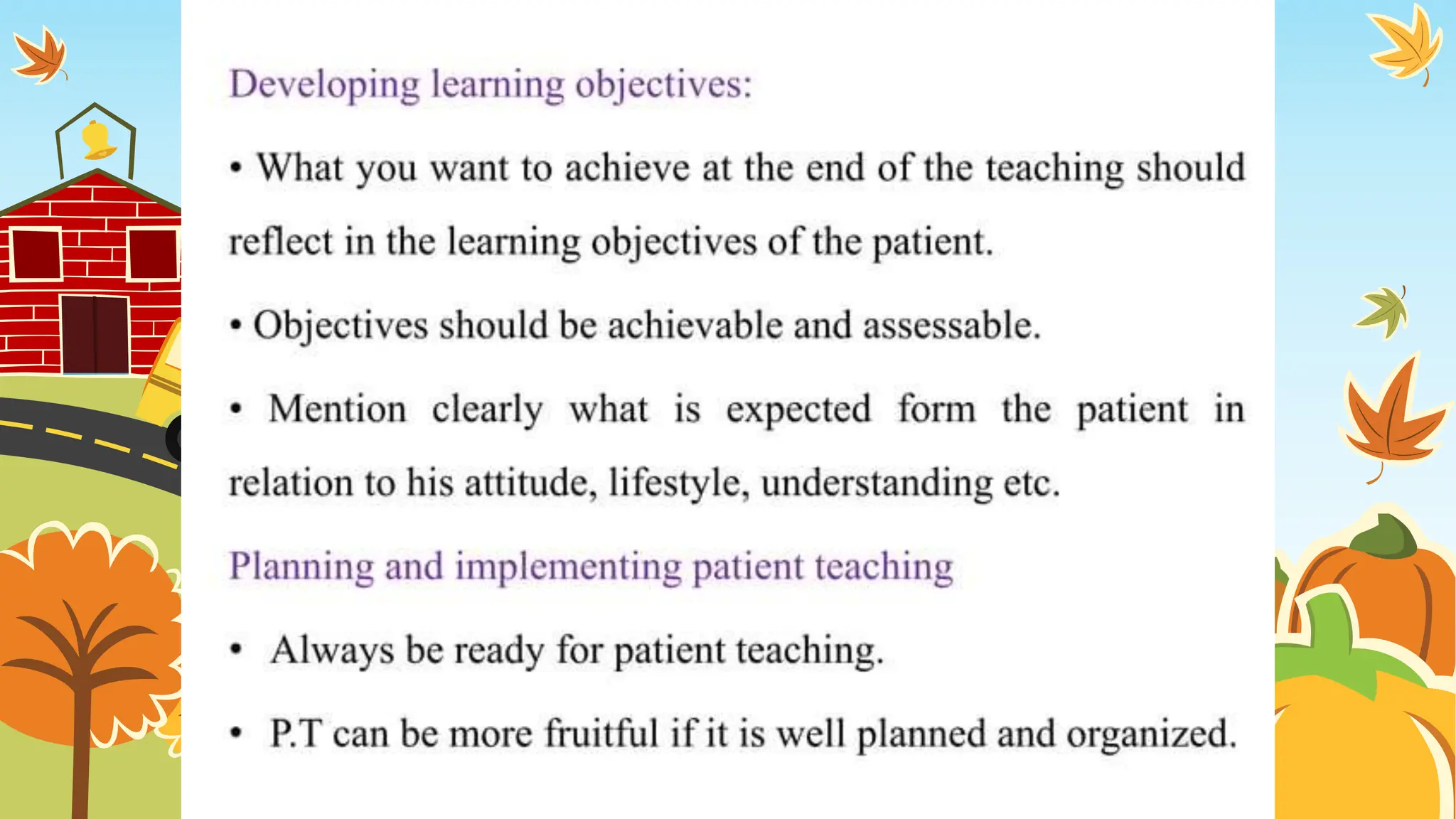The document provides information on patient education for nurses. It discusses the importance of patient education, the nurse's role in teaching patients, and integrating the nursing process into patient education. The purposes of patient education are to promote health, restore health, help patients cope with illness, and prevent disease. Effective patient education requires assessing learning needs, developing teaching plans, using appropriate teaching methods, and evaluating learning.



















































































































